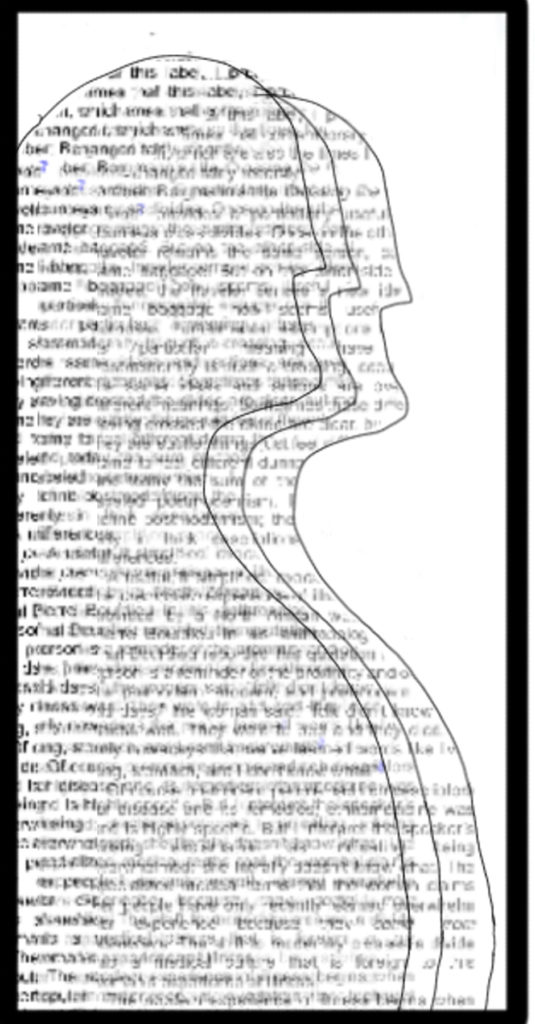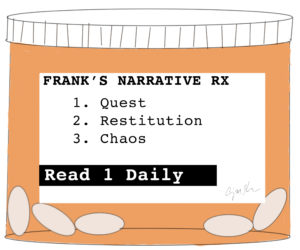by Katie Grogan, DMH, MA
Taylor Wilson was a 21-year-old woman, described by her parents as a bookworm and aspiring librarian. She also struggled with an opioid addiction. Wilson was on leave from college, seeking treatment in West Virginia—the state with the highest drug-related death rate in the nation, where the need for recovery resources tremendously outstrips the supply—waiting for a nearby rehabilitation center to tell her if a bed had opened up. Tragically, that call came too late, just days after Wilson’s mother found her dead of a fatal overdose from a spiked batch of heroin.
Wilson’s story is not necessarily unique. The current opioid epidemic is said to comprise the worst drug crisis in American history, with opioid-related overdoses now the leading cause of death in Americans under 50. But her experience cogently demonstrates the ambivalent place of addiction in our culture.

Substance use is increasingly conceptualized as a disease but remains the subject of moral judgment. Wilson’s parents tirelessly tried to get her help, exploring inpatient treatment, spiritual mentoring, involuntary commitment to a psychiatric hospital, outpatient counseling, 12-step Narcotics Anonymous meetings, and medication-assisted treatment with Suboxone. Each of these recovery modalities tells a different story about addiction—what it is, what causes it, and what treats it. Substance users, their loved ones, and the general public find themselves trying to make sense of these radically conflicting narratives.
Philosophical and scientific debates about substance use are well-shorn territory. Less charted, however, are the narrative dimensions of addiction. Attending critically to the stories underlying the various models of addiction is, I believe, imperative to understanding what they’re really saying and, importantly, what their inherent risks and limitations are.
The categorization of illness narratives developed by medical sociologist Arthur Frank, I think, offers one useful tool for scrutinizing the moral and biomedical accounts of addiction. In his seminal book The Wounded Storyteller, Frank proposes three types of illness narratives: (1) quest, (2) restitution, and (3) chaos. As a culture, we prefer some to others.
At its extreme, the idea that addiction is a moral condition condemns people with substance use disorders (SUDs) as weak or bad—individuals who freely choose, through voluntary acts, to take drugs. Views of addiction as a spiritual or social problem are less overtly blaming but not entirely exonerative. These accounts figure recovery as a quest, where addiction is a challenge the individual must conquer through hard work.
In Frank’s quest narrative, there are three ethics: (1) an ethic of recollection, where one takes responsibility for past actions; (2) an ethic of solidarity and commitment, where one offers one’s voice to speak alongside fellow sufferers; and (3) an ethic of inspiration, where one becomes a heroic exemplar to others. These ethics echo tenets of the 12-step model, particularly the personal moral inventory and commitment to carrying the message of recovery to others. Quest narratives are about perseverance, transformation through suffering, and owning one’s story. Sufferers are moral agents who actively help bring about their own recovery. The risk is quest narratives may deprecate those who seemingly don’t muster the will to overcome. They imply that if you fail, it’s because of your weak or immoral character.
The brain disease model of addiction (BDMA) offers a more compassionate view. SUDs are only about will insofar as the disease impairs autonomy and forecloses choice. What looks, through the moral lens, like volitional drug taking is actually out of one’s control. The BDMA gained traction after a landmark 1997 Science paper by Alan Leshner, former Director of the National Institute on Drug Abuse. Leshner defined addiction as a chronic, relapsing brain disease that alters the reward circuit, resulting in compulsive drug seeking and use. Addiction starts with voluntary substance use, Leshner says, but later a switch is flipped and the behavior is not a matter of choice. Hence, the “the hijacked brain” metaphor we began seeing in the news media shortly thereafter.
The BDMA is attractive for its implied promise of more effective treatment. If something is a disease, modern medicine can fix it, right? The neuroscience of the BDMA is, of course, complex. But it’s oversimplified in the popular discourse to suggest enhanced cures, access, and outcomes are imminent. The BDMA tells a story of restitution, one that fulfills, in Frank’s words, “the modernist expectation that for every suffering there is a remedy.” Restitution narratives are the most prevalent and culturally preferred type of illness story.
But the BDMA has come under fire. Some say the new treatments and expanded access predicted by BDMA advocates have failed to materialize. Public health researcher Wayne Hall and his colleagues suggest, “Pharmaceutical companies . . . doubt new drugs to treat addiction will be profitable, in view of the limited capacity of people with addiction to pay for treatment [and] the absence or limited availability of health insurance coverage for addiction treatments in the USA.” This aligns with the fatal limitation of Frank’s restitution narrative: “restitution is increasingly a commodity that some can purchase and others cannot.”

Restitution narratives normalize illness—our bodies (and brains) break down and require fixing. The BDMA was purported to normalize addiction by destigmatizing it. That most certainly hasn’t happened. True, it’s a tall order and not the explicit goal of biomedicalizing SUDs. But, still, when pressed on the validity of the BDMA, its most vocal champions invoke destigmatization as a pragmatic defense. Even if evidence is not in its favor, they argue, “the mere framework of BDMA has benefits in treatment as it significantly diminishes the stigma attached with addiction and gives hope for recovery to those fighting this devastating disease.” But the empirical proof is hazy. Some studies show that disease-based explanations of undesirable behavior mitigate perceived culpability and reduce blame. Others show no association between the BDMA and diminished stigma in the public view.
In quest narratives, sufferers are largely autonomous, while restitution stories circumscribe agency. BDMA critics fear it absolves individuals with SUDs of complete responsibility, which ultimately can impinge on liberty. A 2014 study indicated that some neuroscientists and clinicians believe the BDMA fosters learned helplessness, diminishes motivation to seek help, and undermines the belief that one can change one’s own behavior. They used phrases like “done deal,” “a permanent condition,” and “my brain is f**ked.” To the extent the BDMA limits liberty, there’s concern it could justify coercive and paternalistic treatment interventions that are essentially medically sanctioned moralizing.
The lived experience of the Wilson family is probably best captured by Frank’s third type of story: the chaos narrative, characterized by a loss of control, unpredictability, and the breakdown of relationships. Neither the sufferer nor the medical system can fix the problem: “the modernist bulwark of remedy, progress, and professionalism cracks to reveal vulnerability, futility, and impotence.” But the tragic paradox is that true chaos stories can’t be told or heard. It’s our least preferred narrative type, so we struggle to recognize them, or force them into the more acceptable quest and restitution frameworks.
It’s unlikely any single model—moral, medical, or otherwise—will encapsulate the complexity of addiction. Likewise, no story ever conforms exclusively to one of Frank’s categories: “In any illness,” he writes, “all three narrative types are told […] At one moment in any illness, one type may guide the story.” With the predominance of the BDMA, we’re in a moment where the restitution framework is guiding our cultural conversation about SUDs. But assessing the strengths and limitations of any explanation of addiction necessitates the kind of narrative scrutiny I’ve described here. This is essential for members of the medical community, where stigma toward substance users persists. And it’s crucial for all us, if we hope to get closer to the full story on addiction.